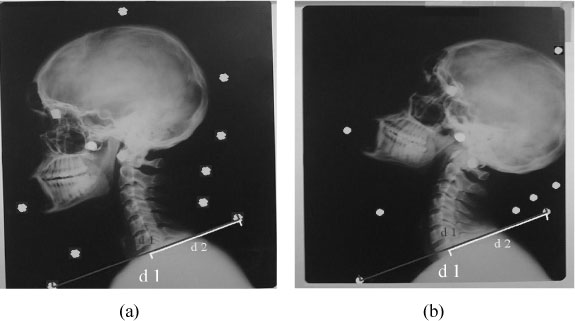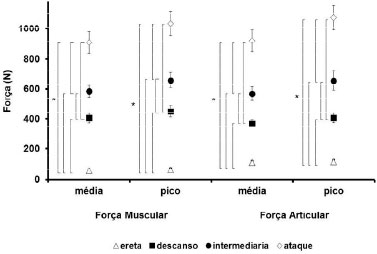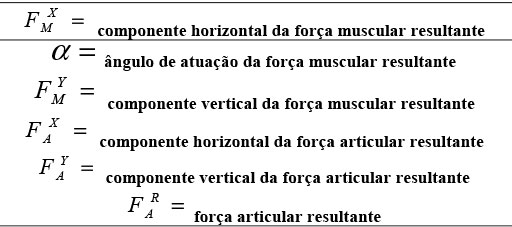This study examined the influence of the subject position on the bicycle during pedaling, on the mechanical overload in the cervical spine. Nine subjects were evaluated during the test on a racing bicycle coupled to a cyclesimulator. The protocol consisted in pedaling in four different postures (erect, rest, intermediate and attack), with video filming in the sagittal plane. Images were digitized using the software DVideow, which enabled the calculation of kinematic variables, later inserted into the biomechanics model to calculate the muscle (FM) and joint (FA) forces. When the subjects changed from erect to rest posture, rest to intermediate posture, intermediate to attack posture, the mean and the maximum values of FM and FA have increased (p<0.05). Therefore, there was a significant increase in the FM and FA forces as the cervical spine became more extended and projected forward.
Cycling; Biomechanics; Spine; Posture



















